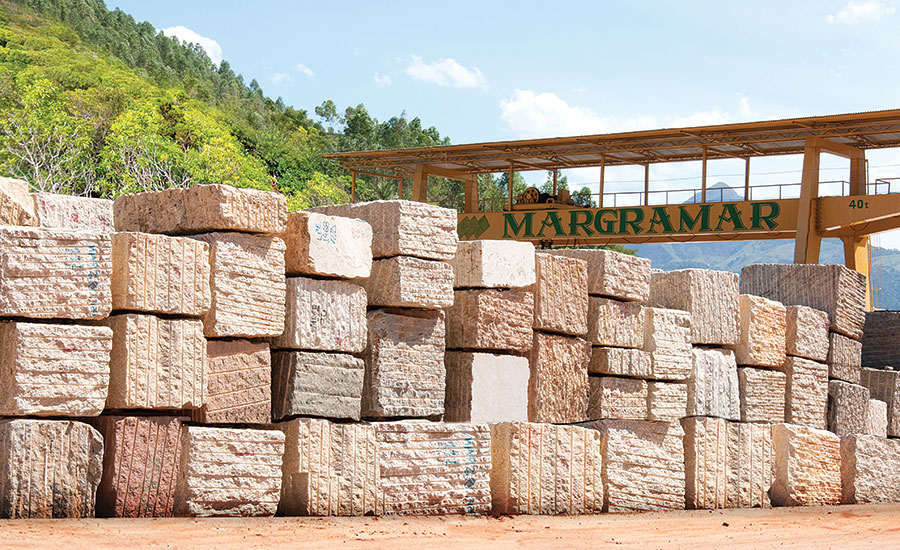Finding the Elegance of Granite Quarry in South Africa Wonders
Finding the Elegance of Granite Quarry in South Africa Wonders
Blog Article
Revealing the Mysteries of Granite Quarrying: Where Toughness and Beauty Meet
The world of granite quarrying is a realm where the raw stamina of nature converges with human artistry to produce frameworks that stand the test of time with an air of elegance. From the midsts of quarries to the careful sprucing up in workshops, the process of changing granite into building wonders is a complex dance of tradition and innovation. As we peer into the depths of this ancient craft, we start to reveal the hidden intricacies that shape the very essence of our built atmosphere.
The Origins of Granite Quarrying
In the annals of architectural history, the origins of granite quarrying are shrouded in a tapestry of ancient workmanship and geological wonders. Going back to old Egypt and Mesopotamia, the removal of granite from quarries noted the beginning of a journey that would ultimately result in the development of a few of the world's most iconic structures.
Granite quarrying's origins can be mapped to the knowledgeable craftsmens that acknowledged the stone's sturdiness and aesthetic appeal. Through a mix of primitive devices and sheer determination, these early quarry employees discovered granite blocks that would become the foundation of human beings.
As human beings progressed, so did the methods of quarrying granite. The Romans, renowned for their engineering expertise, created sophisticated methods for removing granite to create monuments, temples, and roadways that stood the test of time.
The legacy of these old quarrying methods remains to form contemporary architecture, with granite continuing to be a sign of strength and style in building projects around the world. (granite quarries in south africa)
Tools of the Quarrying Profession
The development of granite quarrying techniques from old civilizations to modern-day times highlights the important role played by the devices of the quarrying trade in forming the industry's techniques. In ancient times, quarrying devices were simple, often being composed of chisels, hammers, and wedges made from products like bronze or iron. These tools needed significant workforce and time to remove granite blocks from quarries.

In addition, the introduction of pneumatic tools and high-powered machinery has actually dramatically lowered the physical labor called for in quarrying procedures, improving employee safety and productivity. As the quarrying market remains to introduce, the devices of the trade stay at the leading edge of driving progression and forming the future of granite extraction.
Extracting Blocks of Granite
Utilizing accuracy equipment and advanced techniques, the extraction of granite obstructs from content quarries has actually become an advanced process in the modern quarrying sector. The first action includes identifying the area and dimension of the granite deposit to establish one of the most efficient removal technique. Once an ideal site is selected, the removal process starts with the boring of openings for the placement of explosives. Regulated blasting strategies are then used to disintegrate the granite right into workable sections.

Sprucing Up and Completing Techniques
To attain a flawless surface area on granite blocks, competent artisans utilize a series of thorough polishing and ending up techniques. After the first extraction and forming processes, the granite obstructs undergo a complete polishing stage to enhance their all-natural beauty and toughness. One common technique used in polishing granite is ruby abrasion, where industrial rubies are made use of to grind and polish the rock to a smooth coating. This process not just creates a shiny surface area but likewise makes certain uniformity in color and appearance across the granite block.
In addition to sprucing up, finishing methods are used to further fine-tune the granite's appearance. By carefully choosing and applying these brightening and completing techniques, artisans can change raw granite blocks into beautiful pieces that display both stamina and beauty.

Ecological Effect and Sustainability
With the expanding emphasis on environmental awareness in the industry, granite quarrying methods are significantly scrutinized for their influence on natural resources website link and long-lasting sustainability. Quarrying for granite can have substantial environmental ramifications. The removal procedure typically entails using heavy machinery, nitroglycerins, and huge amounts of water, resulting in environment devastation, soil erosion, and water contamination. In addition, the transport of granite from quarries to processing facilities generates carbon discharges, additionally adding to environmental degradation. granite quarries in south africa.
To alleviate these effects and make sure sustainability in granite quarrying, market stakeholders are embracing different procedures. Carrying out sophisticated innovations to minimize power usage and water usage, reclaiming quarried land for ecological restoration, and promoting liable sourcing techniques are some methods being utilized. Certifications such as the Woodland Stewardship Council (FSC) and the Management in Energy and Environmental Design (LEED) aid customers determine environmentally pleasant granite products.
Conclusion
Finally, granite quarrying is a process that requires specialized devices and advice methods to essence blocks of granite and brighten them to a high level of surface. While the environmental effect of quarrying can be significant, initiatives are being made to improve sustainability methods in the industry. Overall, granite quarrying is a delicate equilibrium between taking advantage of the strength and style of this all-natural stone while decreasing its influence on the atmosphere.
Report this page